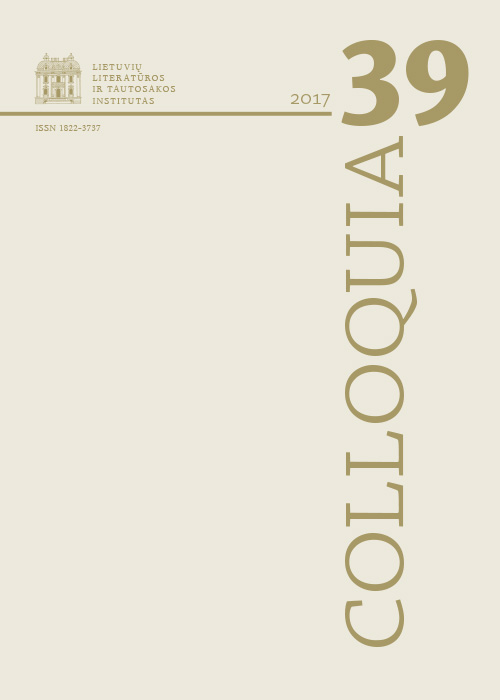Latviškasis sapnas kaip susitikimų su Kitu erdvė
Santrauka
Straipsnyje aptariamas vienas svarbiausių latvių literatūros motyvų – sapnas, žvalgoma niekuo neapribota jo erdvė, tarnaujanti susitikimams su Kitu. Sapno erdvė latvių literatūroje yra daugiasluoksnė, jos labirintuose persikloja įvairūs atminties fragmentai, susidėstantys į sudėtingą latvių tapatybę. Straipsnyje sapnas interpretuojamas kaip raktas į latvių kultūrą, iššifruotas jis dažnai tampa parankus apibūdinti tautos mentaliteto bruožus ir analizuoti jos kolonijinę priklausomybę. Sapnas (taip pat vizija, snaudimas, pasaka) suvokiamas kaip raktažodis, leidžiantis atpažinti latvius tarp savųjų ir kitų. Sapnas iškyla jau Baltijos vokiečių kūriniuose (pvz., Garlybo Helvigo Merkelio Wannem Ymanta, 1802), vėliau puoselėtas romantizmo autorių, o tarpukariu tvirtai įsišaknijo latvių kultūroje. Šiuolaikiniuose latvių romanuose (Dzintaro Sodumo Lačplėsis tremtyje (Lāčplēsis trimdā, 1960–1990), Agnesės Bulės Latvių sapnas (Latviešu sapnis, 2002), Vilio Lacyčio Pabudinti Lačplėsį (Pamodināt Lāčplēsi, 2011) įvairiai suprantamas sapnas atspindi latvių sąmonės ir mąstymo būsenas. Svarbus šių procesų momentas yra susitikimas su Kitu, kuriam gali atstovauti Tamsusis (Juodasis) Riteris arba patys kaukes dėvintys latviai. Susitikimo ir susitinkančiųjų interpretacija dažnai priklauso nuo žiūros taško, reikalauja gerai orientuotis latvių mikropasaulyje bei gebėti demaskuoti netikrus savuosius ir kitus.
